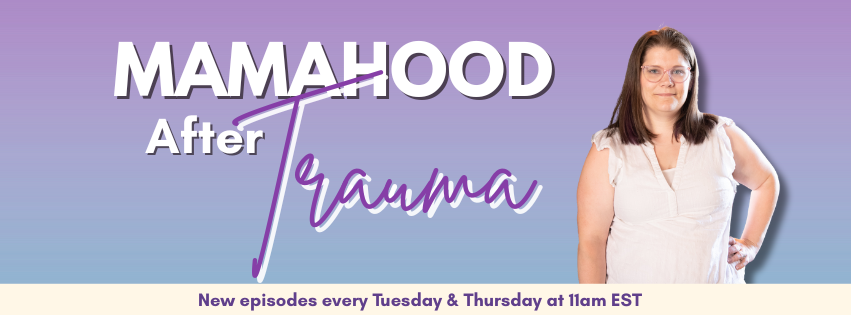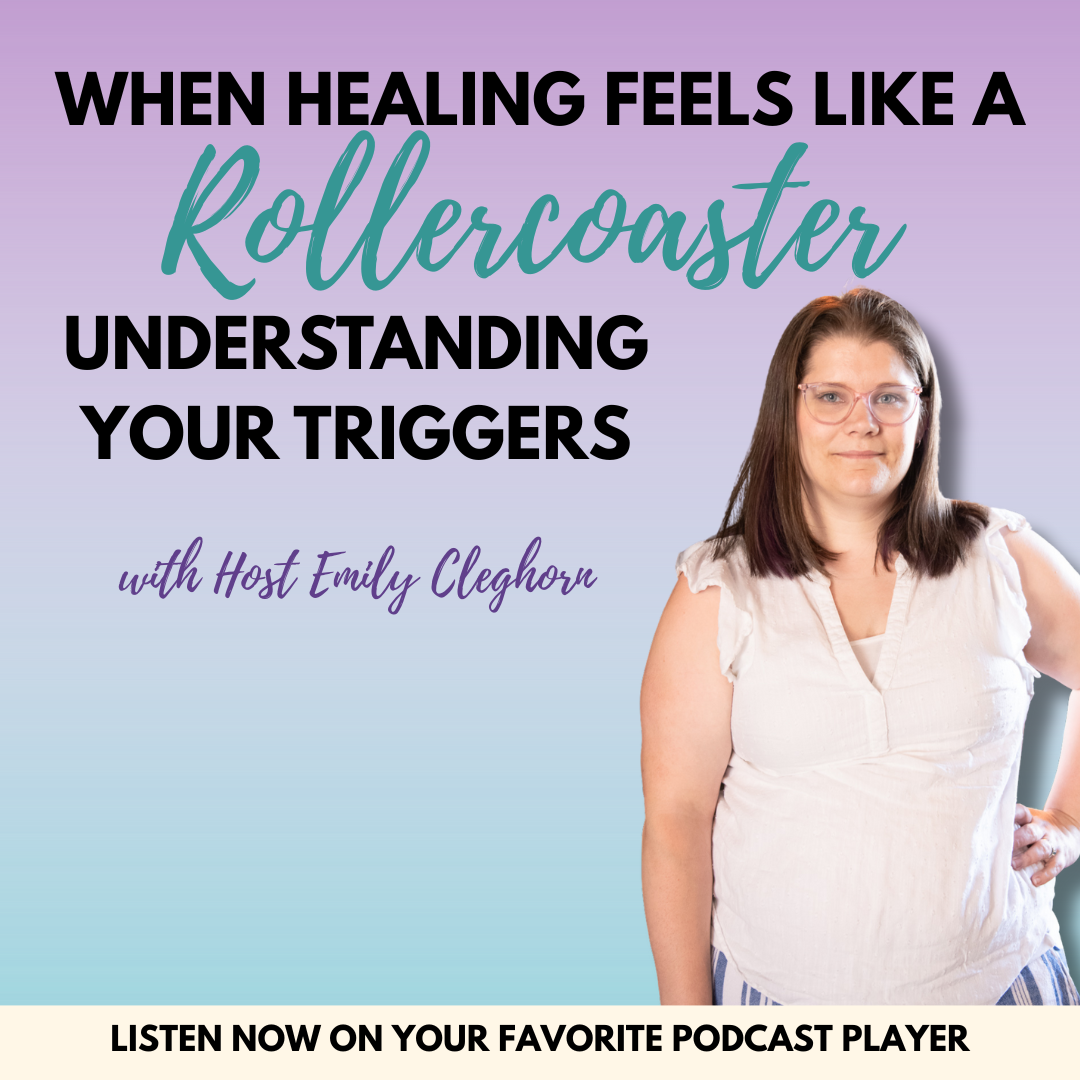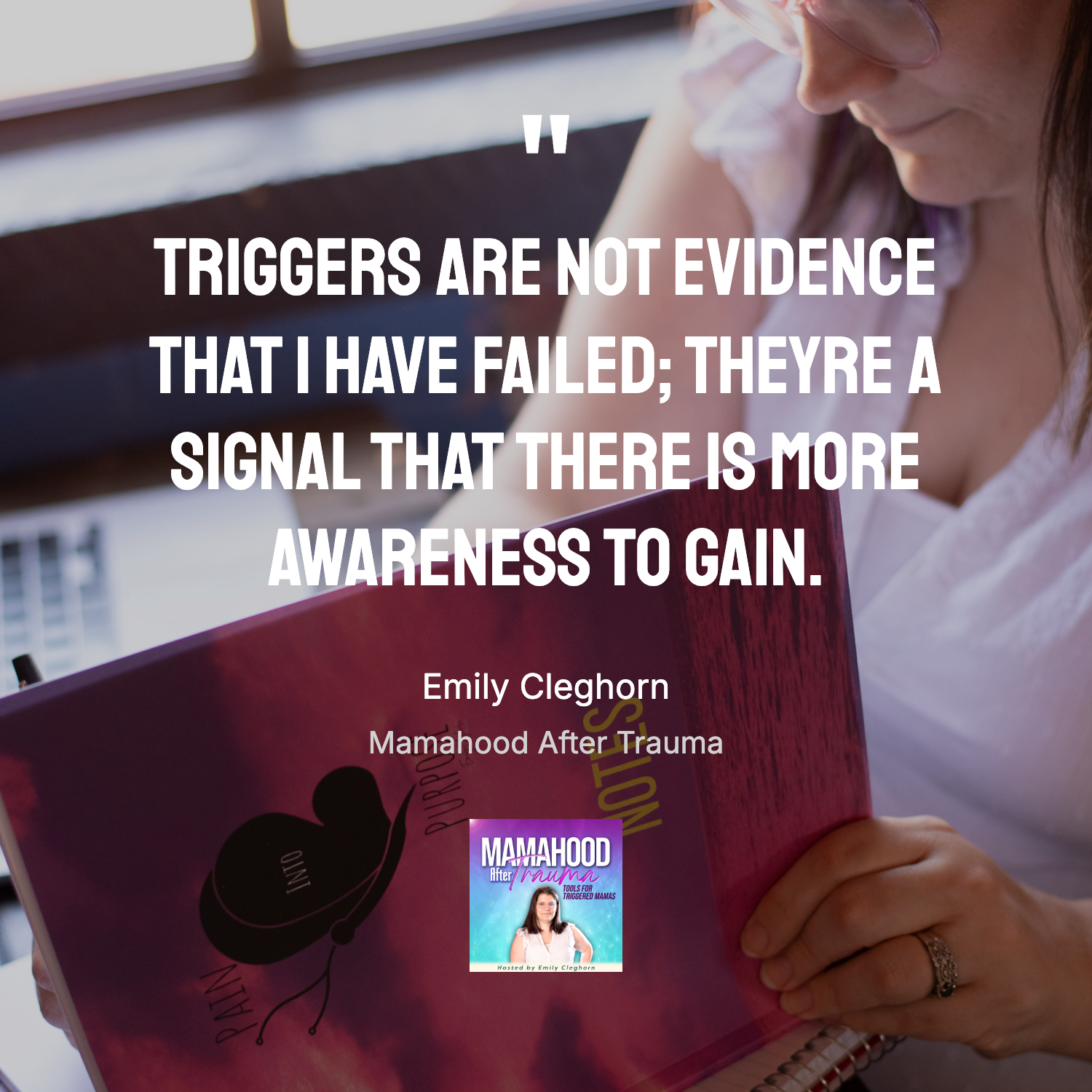
When Healing Feels Like a Rollercoaster: Understanding Your Triggers
In this episode of Mamahood After Trauma, host Emily explores the non-linear journey of healing from trauma as a mother.
She reassures listeners that being triggered is normal and not a sign of failure, emphasizing the importance of self-compassion and understanding that healing unfolds in layers.
Emily shares practical strategies—such as pausing, journaling, and mindful breathing—to manage triggers, and encourages listeners to download the free "Unlocking Peace Guide."
The episode inspires mothers to embrace their progress, practice kindness toward themselves, and continue healing, reminding them they are not alone on this path.

Table of Contents
Introduction & Resource Reminder (00:00:00)
Emily welcomes listeners, introduces the podcast, and reminds them to download the free "Unlocking Peace Guide."
The Non-Linear Nature of Healing (00:01:49)
Emily discusses how healing from trauma isn't linear and being triggered doesn't mean failure.
Understanding Triggers & Layers (00:04:20)
Explains why triggers recur, using the onion analogy, and how the body processes trauma in layers for safety.
Self-Compassion and Practical Steps (00:07:08)
Emphasizes self-compassion, pausing, journaling, and breathing as tools for managing triggers and progressing in healing.
Closing Encouragement & Resource Promotion (00:07:50)
Co-host encourages downloading the guide, reassures listeners they're not alone, and closes the episode.
Navigating the Non-Linear Path of Healing: Actionable Strategies for Mothers After Trauma
Welcome to a deep dive inspired by the latest episode of "Motherhood After Trauma" with Emily.
If you’re a mother on a healing journey, you know that recovery from trauma isn’t a straight line. One day, you feel empowered and whole; the next, an unexpected trigger can send you spiraling. This episode is a compassionate, practical guide for mothers who want to understand and manage these moments with grace, self-compassion, and actionable tools.
Below, we break down the main themes and expert advice from Emily, offering you a comprehensive roadmap to navigate the ups and downs of healing after trauma—especially in the context of motherhood.
Understanding the Non-Linear Nature of Healing
Key Insight:
Healing from trauma, especially as a mother, is not a linear process. You may feel “healed” one day, only to be blindsided by a trigger the next.
Why This Matters:
Many mothers feel discouraged or even ashamed when old wounds resurface. Emily emphasizes that this is not a sign of failure, but a normal part of the healing journey.
Expert Advice:
- Expect Ups and Downs: Healing is a journey with peaks and valleys. Progress is not erased by setbacks.
- Normalize the Experience: Understand that everyone on a healing path experiences moments of regression or surprise triggers.
Actionable Takeaway:
When you’re caught off guard by a trigger, remind yourself: “This is part of the process. I am still healing, and that’s okay.”
Reframing Triggers: Signals, Not Setbacks
Key Insight:
Triggers are not evidence of failure. They are signals—messages from your body and mind that there is more to explore and heal.
Why This Matters:
Viewing triggers as failures can lead to shame and self-criticism, which hinders healing. Instead, see them as opportunities for deeper awareness.
Expert Advice:
- Shift Your Mindset: Instead of asking, “Why am I still triggered?” ask, “What is this trigger trying to teach me?”
- Embrace Curiosity: Approach triggers with curiosity rather than judgment.
Actionable Takeaway:
When triggered, pause and ask yourself:
- What am I feeling right now?
- Where might this feeling be coming from?
- What can I learn from this moment?
The Onion Analogy: Healing in Layers
Key Insight:
Healing from trauma is like peeling an onion. Each layer represents a different aspect of your experience, and your body only allows you to process what you’re ready for.
Why This Matters:
Understanding this analogy helps you be patient with yourself. Deep wounds may resurface as you become safer and more resilient.
Expert Advice:
- Honor Your Body’s Wisdom: Your nervous system is designed to protect you. It reveals deeper layers only when you’re ready.
- Recognize Progress: Each time a new layer emerges, it’s a sign that you’re strong enough to handle it.
Actionable Takeaway:
When a familiar issue resurfaces, remind yourself: “This is a new layer. I am ready to heal this part now.”
The Power of Self-Compassion
Key Insight:
Self-compassion is the cornerstone of trauma recovery. Offering yourself grace and kindness is not just comforting—it’s transformative.
Why This Matters:
Self-criticism can keep you stuck in cycles of shame and pain. Compassion, on the other hand, fosters growth and resilience.
Expert Advice:
- Practice Gentle Self-Talk: Replace harsh inner dialogue with words of encouragement.
- Acknowledge Growth: Recognize that every act of self-compassion is a step forward.
Actionable Takeaway:
When you notice self-judgment, pause and say to yourself:
“I am doing the best I can. Healing is hard, and I am proud of my progress.”
Practical Steps for Managing Triggers
Emily offers a simple, effective process for handling triggers in the moment:
1. Pause
- Why: Interrupts the automatic reaction and creates space for awareness.
- How: When you feel triggered, stop what you’re doing, even for a few seconds.
2. Notice
- Why: Identifies the trigger and your emotional state.
- How: Ask yourself, “What just happened? What am I feeling in my body and mind?”
3. Journal
- Why: Helps process emotions and gain clarity.
- How: Write down your thoughts, feelings, and any patterns you notice. Even a few sentences can be powerful.
4. Breathe
- Why: Calms the nervous system and grounds you in the present.
- How: Take slow, deep breaths. Inhale for four counts, hold for four, exhale for four.
Pro Tip:
Keep a small notebook or use a notes app on your phone to quickly jot down your thoughts when a trigger arises.

Unlocking Peace: A Resource for Your Journey
Emily encourages listeners to download the Unlocking Peace Guide—a free resource packed with tools to help you manage triggers and reclaim calm.
What’s Inside:
- Grounding exercises
- Journaling prompts
- Breathing techniques
- Practical strategies for everyday triggers
Why Download It?
- Immediate Support: Use it in the moment when you feel overwhelmed.
- Long-Term Growth: Build a toolkit for ongoing healing and resilience.
How to Get It:
Click right here to download your copy now.
Final Thoughts: Growth in the Messiness
You’re doing better than you think.
Healing is messy, unpredictable, and sometimes exhausting. But every moment of awareness, every act of self-compassion, and every time you pause instead of react is a victory.
Remember:
- You are not alone.
- Triggers are part of the journey, not the end of it.
- Growth happens in the messiness, not in perfection.
Emily’s closing words:
“Mend the past so you can mama in peace.”
Ready to Take the Next Step?
Download your free Unlocking Peace Guide and join a community of mothers healing together.
Stay gentle with yourself. You are worthy of peace, healing, and joy.
If this post resonated with you, share it with another mama who might need encouragement today. Healing is possible, and you are never alone on this journey.
About Emily Cleghorn

Emily Cleghorn is an award-winning Holistic Trigger Recovery Coach, bestselling author, podcaster, and sought-after speaker on a mission to help trauma-surviving mamas heal while parenting. Through her signature Mended Mama Method, Emily empowers moms to navigate triggers and tantrums with confidence, breaking free from reactive patterns and creating a peaceful, connected home.
Driven by her passion for creating positive generational change, Emily shares her powerful story of overcoming the grip of childhood trauma to inspire others that healing is possible — even in the chaos of motherhood. Her work has touched countless lives, giving mamas the tools and hope to reclaim their peace and raise emotionally healthy kids.
Want to be a guest on Mamahood After Trauma? Send Emily Cleghorn a message on PodMatch, here